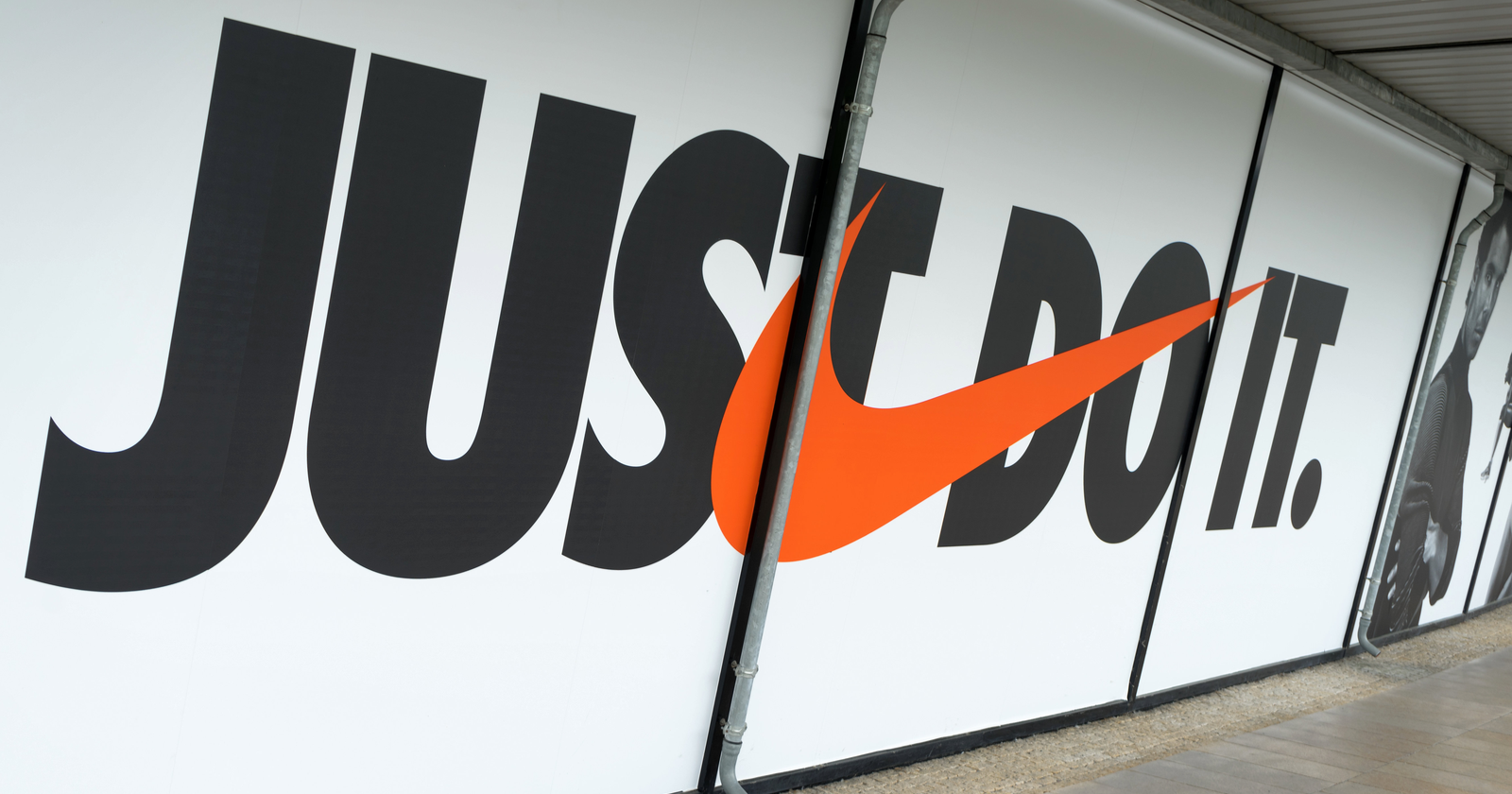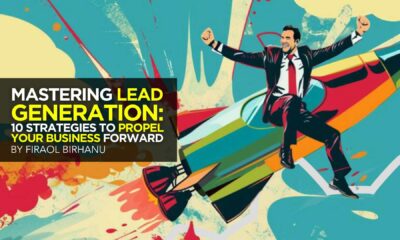MARKETING
Writing Successful Slogans & Jingles: 11 Perfect Examples

Some brand jingles and slogans are easily remembered. Others are easily forgotten.
That’s because different people remember different things.
A person can typically remember the jingle, its message, and (most importantly) the brand represented by it, when considering some of the best jingles and slogans over the last 30 years.
Sure, some stick out more than others. Some have been iconic; others have been legendarily awful.
But no matter how you slice it, the really good ones leave impressions that last years, decades, or even a lifetime.
Here are some of the most iconic jingles and/or slogans that have succeeded over the last three decades because of the high-quality writing behind them.
11. Motel 6: “We’ll leave the light on for you.”
This Motel 6 slogan was born in the best way: as an ad-libbed line-turned-instant success – and a perfect representation of the motel brand and its values.
Created off the cuff by NPR personality Tom Bodett, this slogan was an optimal way to convey the hotel chain’s welcoming spirit, affordable prices, and general availability.
A slogan that has lasted more than 30 years with showing no signs of stopping, it clearly stands for what Motel 6 is trying to communicate.
And it’s working.
If it isn’t broke, don’t fix it.
10. Maybelline: “Maybe she’s born with it. Maybe it’s Maybelline.”
Used since 1991, the slogan was the anchor for “the number one cosmetics company in America” and its advertising.
It made it until 2016, when it was replaced by the brand’s new “Make it Happen” tagline. But not before it was voted “most recognizable” over the last 150 years by Marketing Week in 2013.
9. Red Bull: “Red Bull gives you wings.”
Red Bull has been a revolutionary product creating a revolutionary experience since the Austrian company’s inception in 1987.
And what better way to do that than with a slogan like “Red Bull gives you wings” for an energy drink that was going to change your day, and ultimately your life?
Only problem was, Red Bull wasn’t offering much more than the average cup of coffee in terms of a jolt (via caffeine). And the U.S. District Court of the Southern District of New York decided that the slogan was misleading customers.
The extra pep in your step – or “wings” as Red Bull called them in its marketing – was deemed ambiguous and Red Bull paid out a $13 million settlement.
8. Skittles: “Taste the rainbow.”
Remarkably in its 25th year as the slogan for Skittles, “Taste the rainbow” has done plenty right.
What began in 1963 under the name “Glees,” Skittles have become the most popular non-chocolate candy in America with its iconic slogan.
Sure, being a tasty candy helps. But the brand’s marketing has found a way to keep the same slogan throughout multiple generations, all while effectively communicating with its audience in a way that has kept us listening, watching, and even laughing.
The slogan has helped convey an enticing image for its product and its relationship with the “rainbow” reference, a connection it will likely always – at least for the general future – be associated with.
And for good reason.
7. McDonald’s: “I’m lovin’ it.”
Another jingle that was communicated – at least in the beginning – by a famous personality was McDonald’s long-running slogan of “I’m lovin’ it,” which got assistance from Justin Timberlake in 2003 when it launched.
The fast-food company’s campaign was anchored around the J.T. song by the same name, which became one of Timberlake’s full-length songs on his album at the time.
McDonald’s spent $1.37 billion in advertising in 2003 when the campaign launched, which led to an 11% increase in sales that year ($17.1 billion).
So, yeah, you could say it worked.
6. Marines: “The Few. The Proud. The Marines.”
Used since 1977, “The Few. The Proud. The Marines.” has remained one of the Marines’ primary recruiting slogans, but it hasn’t been the only one.
Other, similar slogans were used (i.e., “If everybody could get in the Marines, it wouldn’t be the Marines”) but none of lasted as long as “The Few. The Proud.”
Each supplemental slogan has served a distinct purpose to the Marines recruiting missions in terms of needs of the military branch throughout different generations, according to the Marine Times.
“The Few. The Proud.” was nearly dropped in 2016 after the organization explored other possibilities but made a proud return to the Marines’ marketing strategy after a short hiatus in 2017.
“‘The Few. The Proud.” does a great job distinguishing (the Marines) from the other branches (of military) and making us prestigious to recruits, but it doesn’t say anything about what we do or why we exist,” said Lt. Col. John Caldwell, a spokesman for Marine Corps Recruiting Command, to the Marine Corps Times in 2016.
5. Army: “Be all you can be.”
While the Army has since stopped using its “Be all you can be” slogan, its impact cannot and has not been ignored.
And it still resonates today.
The slogan was used by the land warfare service branch from 1980 through 2001 and was eventually replaced by several new attempts to effectively reach its target audience.
First came “An Army of one,” which ran from 2001 to 2006 but didn’t show the same success as “Be all you can be.”
That was eventually replaced by the short salute “Army strong” in 2006, which was successful, but did not carry the same type of message as “Be all you can be,” according to Sergeant Major of the Army Daniel Dailey.
“‘Be All You Can Be’ was a national identity to the Army … it is still today,” Dailey said. “I can say ‘Be All You Can Be’ and people just – it was the national identity to the Army.”
That’s a slogan that’s certainly implanted in many of us who grew up around that 21-year stretch of “Be all you can be” messaging. I know I’m one of them.
4. Burger King: “Have it your way.”
The fast-food chain’s most successful slogan to date, “Have it your way” was a revolutionary call-to-action for Burger King’s customers to order what they want, how they want it.
It’s easily Burger King’s most well-known slogan in a battle that was devoted to catching up to McDonald’s while also fending off other chain challengers. The slogan helped (the best it could).
BK ditched the phrase in 2014 and has since replaced it with several new slogans, including the “Be your way” slogan and, most recently, “Feel your way” slogan, both obvious plays on the original jingle.
3. GEICO: “15 minutes could save you 15% or more on car insurance.”
GEICO spends more than a billion dollars a year to tell potential customers they could save money if they use it as their insurance company.
It is the largest brand advertiser out there and it shows.
We all know the slogan – and the humorous commercials that often accompany it.
It’s simple, concise, and communicated across a multitude of mediums: switch to GEICO and you’ll save money.
It’s also (mostly) true, according to a study by Forbes.
Catchy, easy-to-remember, and, most of all, legitimate in its claim – the GEICO recipe for success has helped build one of the most noticeable brands in America.
It also helps to have deep pockets, A.K.A. budget.
2. Farmer’s Insurance: “We know a thing or two because we’ve seen a thing or two.”
Another insurance company making big noise in a clouded insurance market is Farmer’s.
Competing among some of the most notable advertisements in rotation (see: Geico, State Farm, All State), Farmer’s nails this slogan that is based on real-life facts and statistics and also relays a message of confidence and trust to its customers.
Built around the idea that Farmer’s has dealt with some seemingly unbelievable insurance claims – and properly taken care of those involved and covered by Farmer’s – the car insurance company-turned multi-line, multi-company insurer and financial services group has even built its Hall of Claims section on its website to back up its claim.
It’s tough to contend with high spenders like GEICO, but at least when Farmer’s does it, it drives home a strong and meaningful (and true!) slogan that can help put customers at ease.
1. Nike: “Just do it.”
The power of the best slogan of the last 30 years comes from not just its longevity, but its overall impact, not just on the fitness and footwear industries, but in powerful and meaningful walks of life.
That it would also help shift the industry when Nike needed it most makes it that much better, too.
Aiming to gain market share from other brands like Reebok, advertising executive Dan Wieden created the game-changing slogan on Nike’s behalf from two unusual places in 1988, further adding to the longstanding tagline’s lore.
“It was about the ultimate statement of intention,” Liz Dolan, former chief marketing officer at Nike, told The Washington Post. “It had to be personal.”
And it was, and continues to be.
Just as momentous as its support to helping Nike grow into the worldwide powerhouse it is today is the ability it has had to adapt and continue to still inspire to this day.
From Colin Kaepernick and his stance against social injustices, to women’s equality and admiration, to being a large part of some of the gutsiest performances by athletes across the world, Nike’s message has consistently motivated humans to be faster, stronger, and better.
“Just do it” has only grown in intensity and effectiveness as Nike continues to utilize the message and the underlying drive-home point in all of its overarching messaging.
It’s evolved into a cultural rally cry for standing up for what’s right, fighting your hardest, and making a real impact that isn’t limited to the field, court, or rink.
Nike will continue to use the infamous tagline for many more years to come, and it will likely keep winning by doing so and shifting with the times.


















